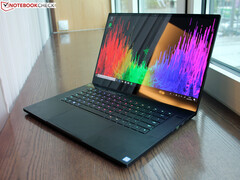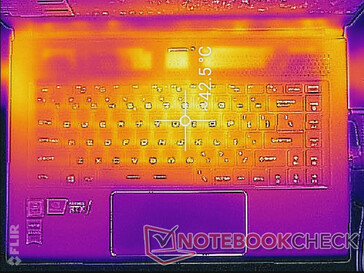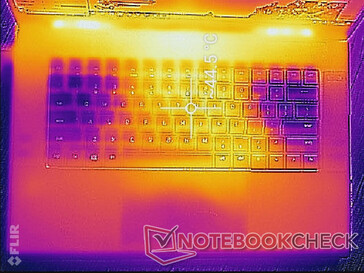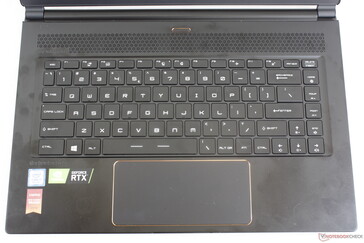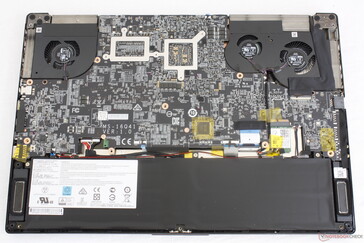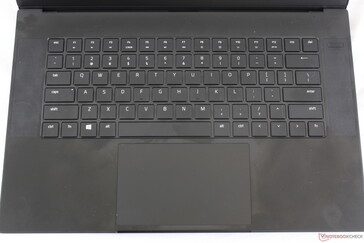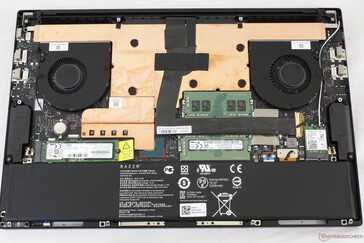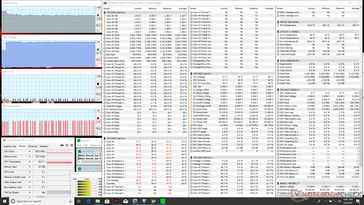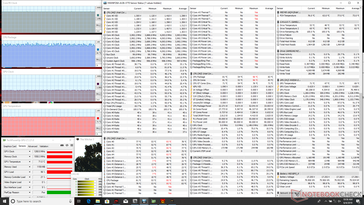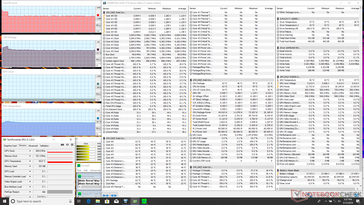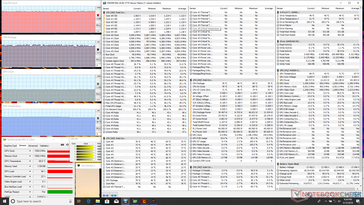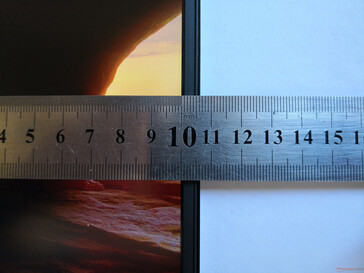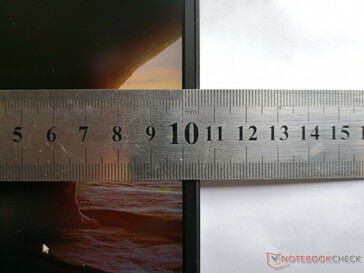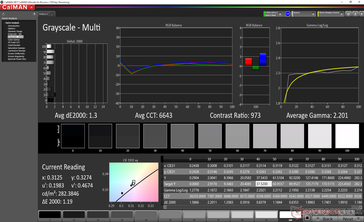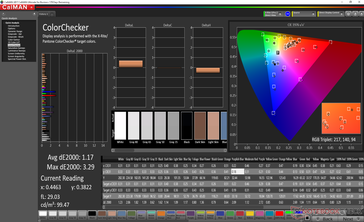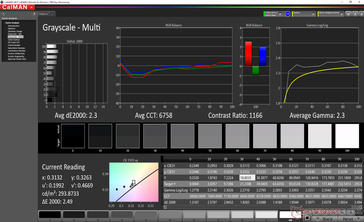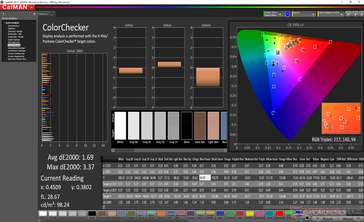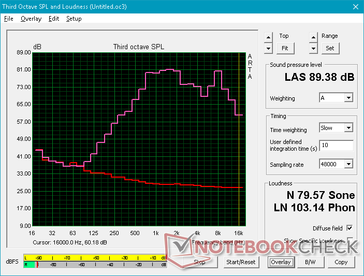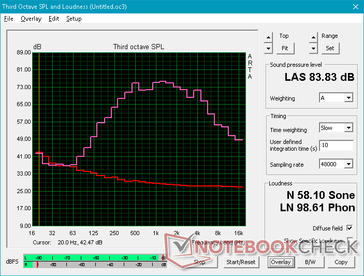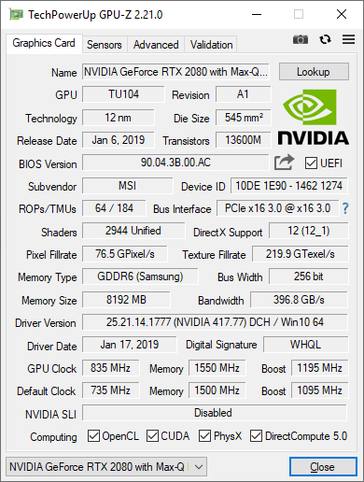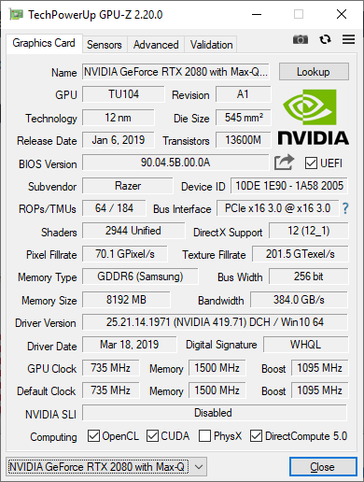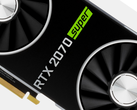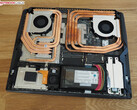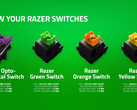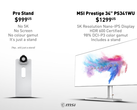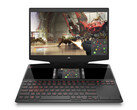If you've been shopping around for an ultrathin 15.6-inch gaming laptop, then chances are good that you've stumbled upon the MSI GS65 or Razer Blade 15. These two are some of the thinnest, smallest, and most photogenic gaming laptops in their category with very similar specifications and features between them.
For this comparison, we'll be taking a closer look at the MSI GS65 9SG and Razer Blade 15 Advanced Model each equipped with identical Intel 9th gen Core i7 CPUs, RTX 2080 Max-Q GPUs, 1080p/240 Hz displays, and even 512 GB Samsung PM981 SSDs to see which comes out on top. They may be alike on paper, but differences do begin to appear when you start digging deeper.
We recommend checking out our individual reviews on the MSI GS65 and Razer Blade 15 Advanced Model for more details and benchmark comparisons on each.
| MSI GS65 9SG | Razer Blade 15 Advanced Model | |
|---|---|---|
| CPU | Core i7-9750H | Core i7-9750H |
| GPU | GeForce RTX 2080 Max-Q | GeForce RTX 2080 Max-Q |
| Display | 15.6-inch, 240 Hz, 1080p, SHP14C5, Optimus, no G-Sync | 15.6-inch, 240 Hz, 1080p, SHP14C5, Optimus, no G-Sync |
| RAM | 32 GB DDR4-2666 (2x SODIMM) | 16 GB DDR4-2666 (2x SODIMM) |
| Storage | 2x M.2 2280 | 1x M.2 2280 |
| Battery | 82 Wh | 80 Wh |
| Ports | 3x USB Type-A Thunderbolt 3 HDMI 2.0 mDP 1.2 RJ-45 3.5 mm microphone 3.5 mm earphones Kensington Lock | 3x USB Type-A Thunderbolt 3 HDMI 2.0 mDP 1.4 3.5 mm combo audio Kensington Lock |
| Dimensions | 17.9 x 358 x 248 mm | 17.8 x 355 x 235 mm |
| Weight | 1.97 kg | 2.21 kg |
Case
Razer is the clear-cut winner in this round. It's smaller in every dimension whilst offering a more rigid chassis design for a tougher, more unyielding, and more luxurious first impression. It's about 200 g heavier, however, likely due to its large vapor chamber cooler when compared to MSI's more traditional approach with standard copper heat pipes.
Serviceability is indubitably easier on the Razer as well whereas the MSI system requires tearing an anti-tamper sticker. The SODIMM and M.2 slots are more difficult to access on the MSI.
(June 7, 2019 correction: Razer Blade 15 Advanced Model has a single M.2 slot versus two on the MSI)
Ports
The GS65 includes RJ-45 and a dedicated 3.5 mm mic port not found on the Razer. Port positioning, however, is arguably better on the Razer whereas all the ports on the MSI are close to the front.
CPU Performance
The MSI system is slightly better at maintaining faster Turbo Boost clock rates than the Razer. As shown by our CineBench R15 Multi-Thread loop test graph below, both systems start out with nearly identical scores. After several loops to account for throttling, however, the CPU in the MSI can outperform the same CPU in the Razer by about 6 to 7 percent.
Running Prime95 reaffirms our observations. The MSI system stabilizes at 3.2 to 3.3 GHz whereas the Razer stabilizes slightly slower at 3.0 to 3.1 GHz.
GPU Performance
In contrast to the above, the Blade 15 has the faster-performing RTX 2080 Max-Q by about 8 to 9 percent according to 3DMark benchmarks. This is at least partially attributed to the faster GPU clock rates of the Razer. When running Witcher 3, for example, the Blade 15 GPU stabilizes at 1350 MHz compared to 1260 MHz on the GS65.
Temperatures
Core temperatures are within a few degrees of one another when gaming with the Razer being just slightly cooler. The CPU and GPU in the MSI stabilize at around 81 C and 71 C, respectively, compared to 79 C and 69 C on the Razer. Activating "Cooler Boost" mode on the MSI system will bump temperatures down even more albeit at the cost of significantly louder fan noise (55 dB(A)) than on the Razer.
Surface temperatures are a mixed bag. The palm rests are cooler and the WASD keys are warmer on the MSI whereas the opposite is true on the Razer. The bottom hot spot on the MSI is especially warmer than the Razer at about 58 C. Comfort is down to user preference especially when it comes to the clickpad, keyboard layout, and key feedback.
Display
Both systems utilize the same 1080p 240 Hz IPS panel from Sharp with nearly identical response times, brightness, gamut, and contrast levels. Thus, the visual experience is almost the same between the two laptops. Interestingly, the MSI panel is ever-so-slightly better calibrated out of the box.
Fan Noise
When gaming, both laptops are about the same at 45 to 46 dB(A) each. When browsing, streaming, or emailing, the Blade 15 is generally the quieter machine as it is less likely to pulse and can remain quieter for longer before needing to kick start the fans.
Power Consumption
The Blade 15 may be 9 percent better in terms of GPU performance, but it consumes about 14 percent more power than the GS65 when gaming. Running Witcher 3 draws 162 W on the Razer compared to 143 W on the MSI.
The opposite is true during very low processing loads. Idling on desktop draws less power on the Blade 15 than on the GS65 to suggest more efficient management of background activity on the Razer. We're able to record between 12 W and 21 W on the Razer compared to 18 W and 29 W on the MSI.
Battery Life
Speaking of power efficiency, the more efficient Razer is able to edge out the MSI in battery life. Real-world WLAN load lasts about 30 minutes longer on the Razer than on the MSI even though both systems are equipped with nearly identical battery capacities.
Verdict
The Razer Blade 15 is marginally smaller, cooler, tougher, quieter, longer-lasting, more serviceable, and with faster GPU performance than the MSI GS65. The differences are generally minuscule, but they all slowly add up to Razer's favor for a more refined experience overall.
The MSI system still has a few advantages going for it. It's noticeably lighter with slightly faster processor performance while hardcore gamers will appreciate the integrated RJ-45 port. Since most games are GPU bound, however, the Razer system will still have the performance advantage when gaming.
The Razer Blade 15 Advanced Model with RTX 2080 Max-Q graphics, 240 Hz display, 512 GB SSD, and 16 GB of RAM can be found for $3000 USD while the MSI GS65 9SG with similar specifications and double the RAM can also be found for $3000 USD. The GS65 would have to retail for a bit less than the Razer when considering its shorter list of strengths.
| MSI GS65 9SG | Razer Blade 15 Advanced Model | |
|---|---|---|
| Advantages | + Slightly faster CPU performance | + Slightly faster GPU performance |
| Cinebench R15 | |
| CPU Single 64Bit | |
| Razer Blade 15 RTX 2080 Max-Q | |
| MSI GS65 Stealth 9SG | |
| CPU Multi 64Bit | |
| MSI GS65 Stealth 9SG | |
| Razer Blade 15 RTX 2080 Max-Q | |
| PCMark 10 | |
| Score | |
| Razer Blade 15 RTX 2080 Max-Q | |
| MSI GS65 Stealth 9SG | |
| Digital Content Creation | |
| Razer Blade 15 RTX 2080 Max-Q | |
| MSI GS65 Stealth 9SG | |
| Productivity | |
| Razer Blade 15 RTX 2080 Max-Q | |
| MSI GS65 Stealth 9SG | |
| Essentials | |
| MSI GS65 Stealth 9SG | |
| Razer Blade 15 RTX 2080 Max-Q | |
| PCMark 8 | |
| Home Score Accelerated v2 | |
| MSI GS65 Stealth 9SG | |
| Razer Blade 15 RTX 2080 Max-Q | |
| Work Score Accelerated v2 | |
| MSI GS65 Stealth 9SG | |
| Razer Blade 15 RTX 2080 Max-Q | |
| 3DMark | |
| 1920x1080 Fire Strike Graphics | |
| Razer Blade 15 RTX 2080 Max-Q | |
| Average NVIDIA GeForce RTX 2080 Max-Q (18048 - 23032, n=19) | |
| MSI GS65 Stealth 9SG | |
| 2560x1440 Time Spy Graphics | |
| Average NVIDIA GeForce RTX 2080 Max-Q (6464 - 8844, n=19) | |
| Razer Blade 15 RTX 2080 Max-Q | |
| MSI GS65 Stealth 9SG | |
| 3840x2160 Fire Strike Ultra Graphics | |
| Average NVIDIA GeForce RTX 2080 Max-Q (4039 - 5238, n=16) | |
| Razer Blade 15 RTX 2080 Max-Q | |
| MSI GS65 Stealth 9SG | |
| 3DMark 11 - 1280x720 Performance GPU | |
| Average NVIDIA GeForce RTX 2080 Max-Q (23386 - 30910, n=20) | |
| Razer Blade 15 RTX 2080 Max-Q | |
| MSI GS65 Stealth 9SG | |
| MSI GS65 Stealth 9SG Sharp LQ156M1JW03 (SHP14C5), IPS, 1920x1080 | Razer Blade 15 RTX 2080 Max-Q Sharp LQ156M1JW03 (SHP14C5), IPS, 1920x1080 | |
|---|---|---|
| Display | ||
| Display P3 Coverage | 67.6 | 66.9 |
| sRGB Coverage | 97.5 | 98.1 |
| AdobeRGB 1998 Coverage | 68.9 | 68.5 |
| Response Times | ||
| Response Time Grey 50% / Grey 80% * | 13.6 ? | 12.8 ? |
| Response Time Black / White * | 12 ? | 10.4 ? |
| PWM Frequency | 23260 ? | 23810 ? |
| Screen | ||
| Brightness middle | 282.3 | 293 |
| Brightness | 269 | 270 |
| Brightness Distribution | 90 | 87 |
| Black Level * | 0.32 | 0.29 |
| Contrast | 882 | 1010 |
| Colorchecker dE 2000 * | 1.17 | 1.69 |
| Colorchecker dE 2000 max. * | 3.29 | 3.37 |
| Colorchecker dE 2000 calibrated * | 1.06 | 1.24 |
| Greyscale dE 2000 * | 1.3 | 2.3 |
| Gamma | 2.2 100% | 2.3 96% |
| CCT | 6643 98% | 6758 96% |
| Color Space (Percent of AdobeRGB 1998) | 63.8 | 63 |
| Color Space (Percent of sRGB) | 97.5 | 98.5 |
| Total Average (Program / Settings) |
* ... smaller is better
| MSI GS65 Stealth 9SG i7-9750H, GeForce RTX 2080 Max-Q | Razer Blade 15 RTX 2080 Max-Q i7-9750H, GeForce RTX 2080 Max-Q | |
|---|---|---|
| Noise | ||
| off / environment * | 28.3 | 28.3 |
| Idle Minimum * | 30.4 | 28.8 |
| Idle Average * | 30.5 | 28.8 |
| Idle Maximum * | 30.6 | 29 |
| Load Average * | 37.6 | 33.5 |
| Witcher 3 ultra * | 46 | 45 |
| Load Maximum * | 55.1 | 45.2 |
* ... smaller is better
| MSI GS65 Stealth 9SG i7-9750H, GeForce RTX 2080 Max-Q, 82 Wh | Razer Blade 15 RTX 2080 Max-Q i7-9750H, GeForce RTX 2080 Max-Q, 80 Wh | |
|---|---|---|
| Battery Runtime | ||
| WiFi v1.3 | 362 | 393 |
| Reader / Idle | 953 | |
| Load | 102 |
| MSI GS65 Stealth 9SG i7-9750H, GeForce RTX 2080 Max-Q | Razer Blade 15 RTX 2080 Max-Q i7-9750H, GeForce RTX 2080 Max-Q | |
|---|---|---|
| Power Consumption | ||
| Idle Minimum * | 18.3 | 12.5 |
| Idle Average * | 22 | 15.3 |
| Idle Maximum * | 28.8 | 20.7 |
| Load Average * | 93 | 90.2 |
| Witcher 3 ultra * | 142.6 | 162 |
| Load Maximum * | 215.9 | 209.3 |
* ... smaller is better




